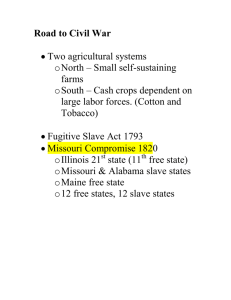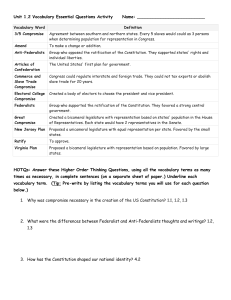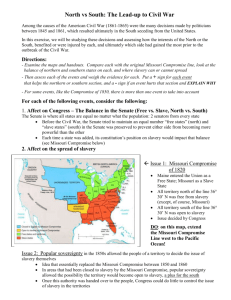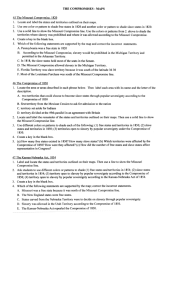What key issues led to the Civil War
advertisement
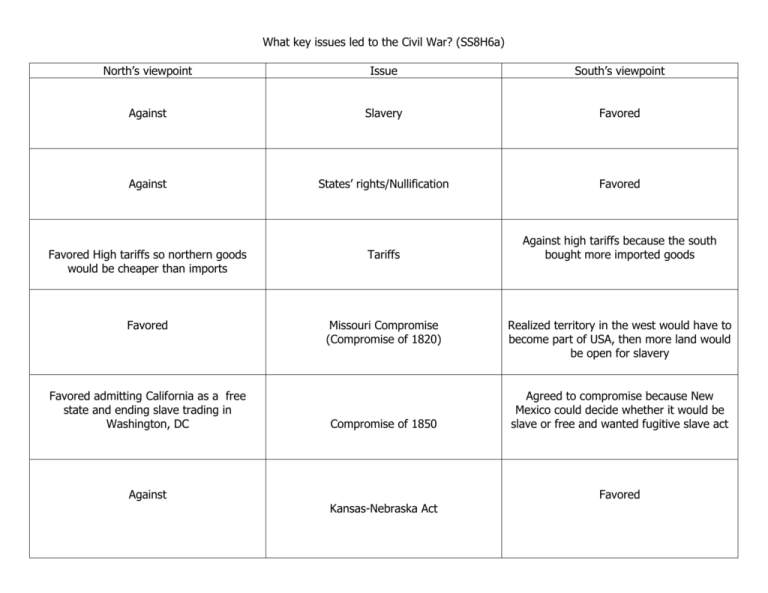
What key issues led to the Civil War? (SS8H6a) North’s viewpoint Issue South’s viewpoint Against Slavery Favored Against States’ rights/Nullification Favored Favored High tariffs so northern goods would be cheaper than imports Tariffs Against high tariffs because the south bought more imported goods Favored Missouri Compromise (Compromise of 1820) Favored admitting California as a free state and ending slave trading in Washington, DC Against Compromise of 1850 Kansas-Nebraska Act Realized territory in the west would have to become part of USA, then more land would be open for slavery Agreed to compromise because New Mexico could decide whether it would be slave or free and wanted fugitive slave act Favored Explanation/Definition of Key Issues Slavery – One group of people owning another group of people for a specific purpose. Ex: White Americans in the south had Africans as slaves. The Egyptians enslaved the Hebrews in the Bible. States’ Rights – The belief that a state can pass laws on certain issues if there are no laws about it in the U.S. Constitution. Ex: slavery was a states’ rights issue b/c the U.S. Constitution didn’t say it was illegal. Nullification – States deciding to follow laws in the U.S. Constitution they don’t agree with. Missouri Compromise – Maine became a free state and Missouri became a slave state. Also, slavery was prohibited below Missouri’s southern border. Compromise of 1850 – Here are the components of the Compromise of 1850 (Write this) – Calif. admitted as a free state, territories of New Mexico and Utah could choose slavery, Fugitive Slave Act passed, and slave trading outlawed in the District of Columbia Kansas – Nebraska Act – Territories of Kansas and Nebraska could decide for themselves if they would allow slavery or not. This overturned the Missouri Compromise. Dred Scott Case – Ruling by the U.S. Supreme court that slaves were not citizens and could not file lawsuits.




